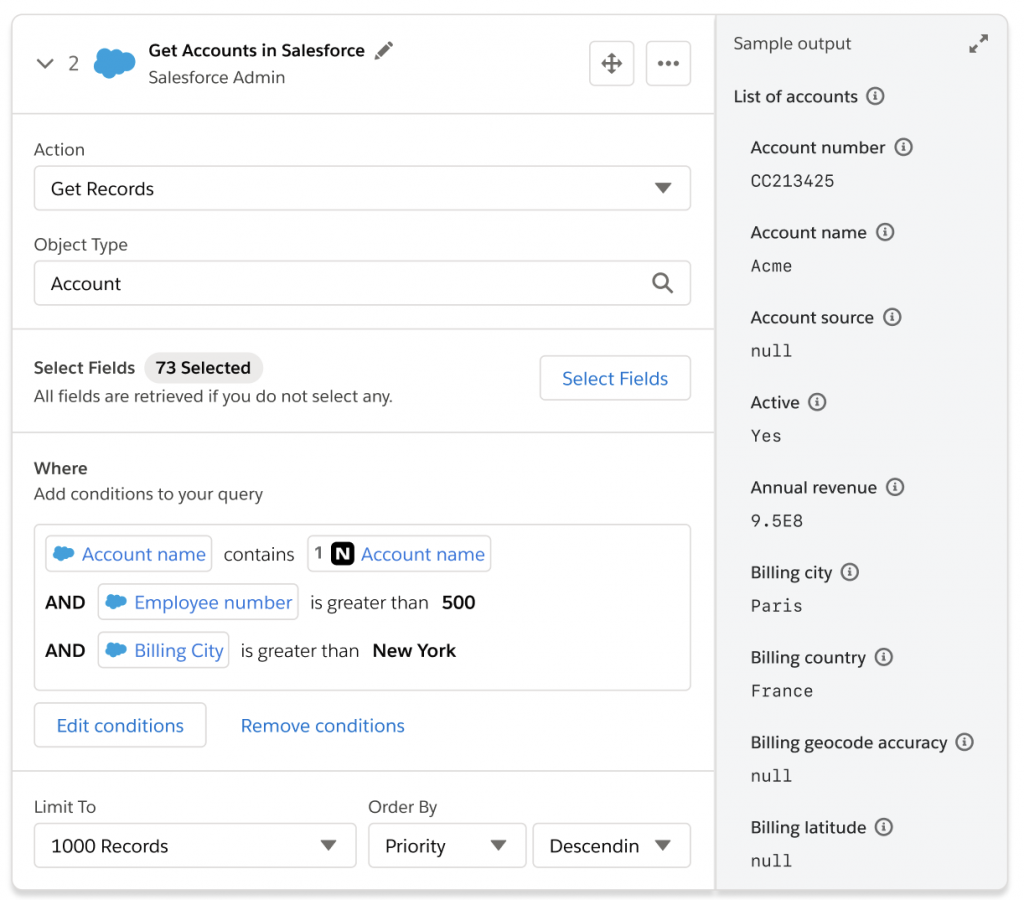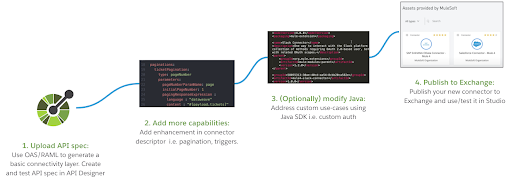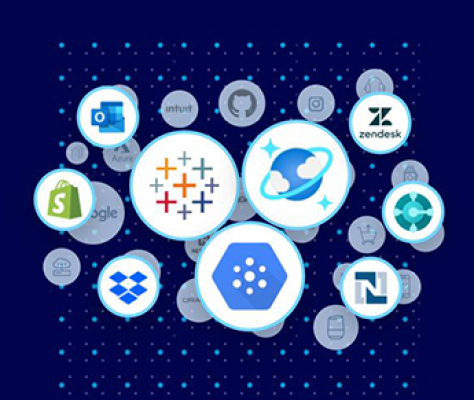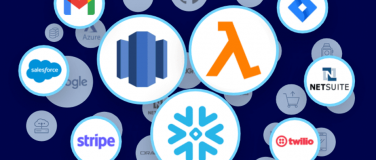Working with APIs can be challenging, especially when you have to unpack multiple concepts such as REST, OData, webhooks, watermarking, pagination, etc. MuleSoft Connectors augment these concepts by bringing a simple interface to developers at design time, so the developers only need to worry about the systems they’ll be integrating with.
MuleSoft enables faster connectivity with hundreds of pre-built connectors offering:
- Single interface that encapsulates all operations to external systems.
- Simplified configuration with built-in support for pagination, batch, OAuth, and more.
- DataSense shows API data types and structures to users so they can easily identify and transform data.
- Connectors augment different interfaces including SOAP, REST, OData, and other protocols such as JDBC, HL7.

Example: Salesforce connector with hundreds of API operations in a single view.
Benefits of building a connector
With one connector, your application will integrate with thousands of top APIs and services. By creating your own connector, you will:
- Expand your reach to 6,000+ enterprise organizations
- Drive incremental revenue via MuleSoft referrals
- Establish your expertise in digital transformation
Join the MuleSoft Connector Partner Program and build your connector today for free.
Cost of building a connector
It’s fast and requires zero code. MuleSoft’s connectivity platform accelerates the connector development process by instantly converting API specification into a fully functional connector. During the conversion process, we allow connector creators to include additional capabilities such as triggers, pagination, and more.
By using API specification as a base connectivity asset, we significantly accelerate the creation of a Mule connector. Simply upload an API specification in OAS or RAML, and the connectivity platform will convert it into a connector.
The additional capabilities simplify the usability of your API. For example, a connector with triggers can watch for new data and start off the integration workflow when a change happens in a source system. Using pagination is another best practice, that allows your connector to go through a large number of records returned by the API.
To define and model additional capabilities on top of API specification, we offer metadata that is simple and doesn’t require any knowledge of Java or other programming languages.
For example, to enable pagination in your connector, first declare a pagination strategy used by your API:
content-search-pagination:
type: offset // Select pagination strategy used by your API
parameters:
offsetParamName: "start"
initialOffset: 0
pagingResponse:
language: "dataweave"
expression: "#[payload.hits]"
Then, simply indicate which endpoints are paginated:
endpoints:
/content_search:
operations:
get:
pagination: content-search-pagination
There are tons of other capabilities built into the Connectivity platform — see more detail in our documentation site.
What do I need to build a connector?

- Supply API specification — we support OAS (v2, v3) and RAML.
- Add capabilities such as paging, triggers in the connector descriptor.
- Optional: Modify Java code directly as you see fit e.g. custom authentication.
- Publish a connector to Exchange and use it in Anypoint Studio.
- For your connector to show on public Exchange, you must submit it to our certification program.
Here is a fast way to understand how to instantly generate a connector from an API specification and publish it to Exchange:
Learn more
Register for our upcoming webinar to learn more about the no-code Connectivity platform. We will showcase how to build a powerful connector from scratch in minutes and offer tips from experts who’ve successfully built top MuleSoft connectors.








